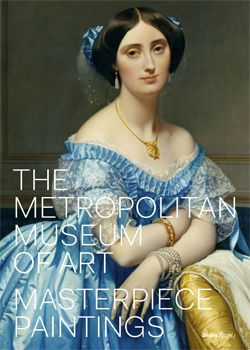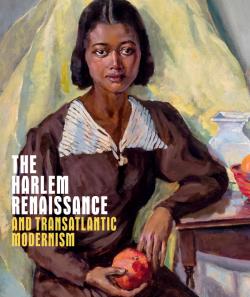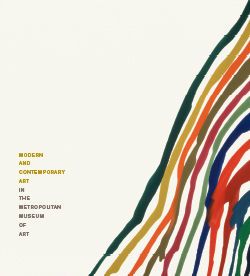Let My People Go
Aaron Douglas American
This radiant painting in lavender and yellow-gold hues belongs to a series of eight panels that revisits designs Aaron Douglas made in 1926 to illustrate author and activist James Weldon Johnson’s God’s Trombones: Seven Negro Sermons in Verse. The seventh panel in the series, Let My People Go visually interprets the Old Testament story about God’s order to Moses to lead the Israelites out of enslavement in Egypt (Exodus 14), a narrative with which enslaved people identified and also one that abolitionists, ministers, and politicians adopted to allegorize the plight of African Americans. Light symbolizing God’s command beams down, enveloping Moses, who kneels in obedient submission. The painting’s title evokes a lyric from "Go Down Moses," a traditional spiritual that enslaved Black people in the nineteenth century sang for religious expression, solidarity, and as a form of coded resistance, one that Civil Rights activists of the 1950s and 1960s invoked to highlight the incomplete struggle for freedom and justice. The iconography of Moses has long been associated with the famed abolitionist Harriet Tubman, who became known as "the Moses of her people" for her heroic efforts to free enslaved people through a secret network of safe houses known as The Underground Railroad.
Douglas was the preeminent muralist and graphic artist of the cultural movement known as the Harlem Renaissance, the consequence of waves of talented Black artists, writers, intellectuals, and musicians who gravitated to Harlem throughout the early twentieth century. Many of them (or their forbears) had participated in The Great Migration, the mass migration of over six million Black Americans, mostly from the segregated and rural South of the country, who fled oppression and violence for greater opportunities and security in Northeastern and Midwestern cities. The resultant artistic and intellectual ferment—which, in the visual arts, was also bolstered by the presence of sculptor Augusta Savage and painter Charles Alston, among others—augmented and complemented much of the philosophical, cultural, and political work of older and more established scholars and educators, such as W.E.B. du Bois and Booker T. Washington. Especially critical to the Harlem Renaissance was Alain Locke’s concept of "The New Negro," one he articulated in an influential 1925 anthology as he believed it applied to this new generation of urbane, self-aware, racially conscious Black Americans with greater potential for upward mobility. In fact, Douglas contributed designs for Locke’s The New Negro, and, on that basis, the author heralded the artist as a "pioneering africanist." Ideas and art relating to the Harlem Renaissance reverberated throughout the United States, Western Europe, and the Caribbean.
The Met notably did not collect art of the Harlem Renaissance in the early twentieth century. More recently, this omission emerged to be an unacceptable lacuna, especially given the Museum’s physical proximity to Harlem, one that underscored the undeniable racial divide between the institution and the substantial communities of color existing only a few blocks north. The Met acquired Douglas’s Let My People Go in 2015 as the Museum’s first major work of the Harlem Renaissance. Subsequent acquisitions of Hale Woodruff’s The Card Players (1930), likewise acquired in 2015, and Charles Alston’s Girl in a Red Dress (1934), acquired in 2021, have extended this ongoing commitment to more fully represent this critical period of modern art.
This image cannot be enlarged, viewed at full screen, or downloaded.









